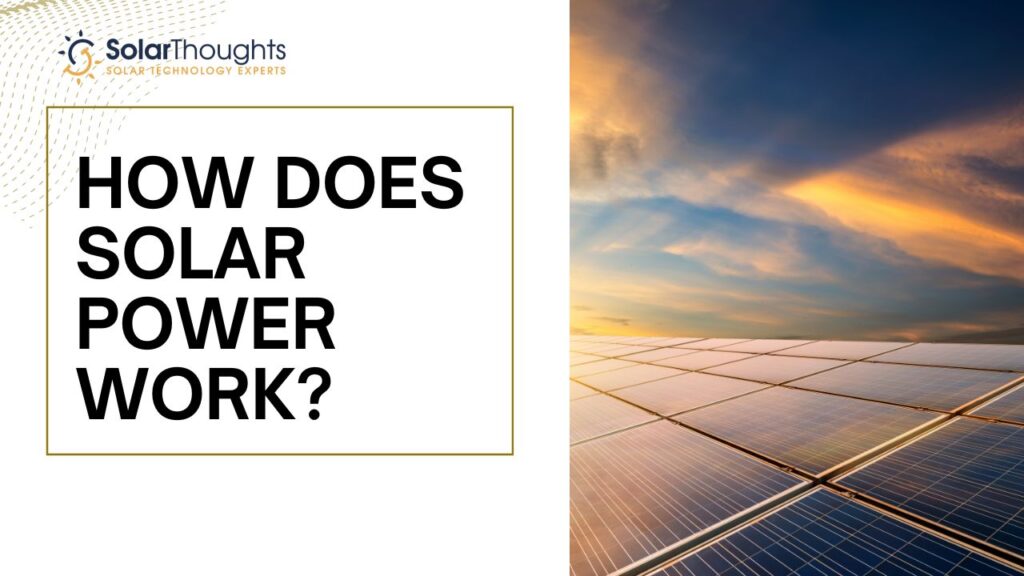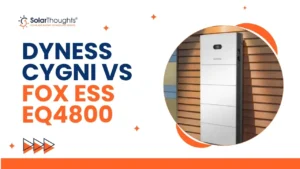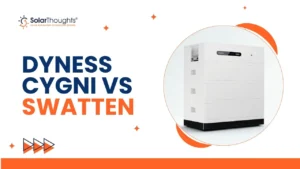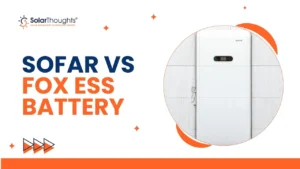Introduction
Solar power harnesses energy from the sun and converts it into usable electricity to power homes and businesses. But how exactly does this complex process happen? In this article, we’ll explore the key components, systems, and steps involved for converting sunlight into renewable solar electricity.
Table of Contents
Toggle1. Components of a Solar Power System
Several important components work together to produce solar power:
-
Solar Panels
Solar panels contain photovoltaic (PV) cells made from silicon semiconductors that directly convert sunlight into Direct Current (DC) electricity. Panels are wired together in arrays to produce higher electric output.
-
Inverters
As panels output DC power, inverters convert this energy into Alternating Current (AC) usable in buildings and compatible with the electric grid. Solar inverters facilitate power storage and grid synchronization as well.
-
Batteries
Though not mandatory, adding solar batteries lets you store excess solar electricity in chemical form for use at night. Batteries increase independence from the grid.
-
Mounting Equipment
Rooftop solar arrays require secure mounting racks and hardware for structural attachment and optimal panel positioning.
Proper design, sizing, and electrical integration of these components facilitate solar electricity generation and distribution.
2. How Solar Panels Work
The solar panels themselves serve as the core electricity generation source in any photovoltaic system. But how do they actually convert pure sunlight into usable power? Through the photovoltaic effect! Here are the key steps:
-
Photons from Sunlight Strike Solar Cells
As photons (light particles) in sunlight shine on a solar panel, they strike the layers of silicon atoms organized into positive and negative semiconductor material inside the PV cells.
-
Electrons Get Knocked Loose
The photons’ energy knocks electrons loose from their atomic bonds, enabling them to flow freely as electricity.
-
Electric Fields Guide Electron Flow
The cells’ electric field structure interacts with and directs the freed electrons in a singular direction across both semiconductor layers as Direct Current.
-
Wires Transmit Generated Electricity
Conducting wires transmit this flow of electric current, harnessing the electrical output from the panel’s interconnected solar cells.
While solar cell electron excitation seems complex, it simply comes down to sunlight providing electromagnetic energy to dislodge electrons for harnessing as electricity!
3. Pathway to Consuming Solar Electricity
Once solar panels generate electrical current, that energy requires proper routing and transformation to power a building:
-
DC Current Transmits to Inverter
The DC electricity from solar panels transmits via wires to a central inverter location.
-
Inverter Converts to AC
The inverter transforms the Direct Current into standard Alternating Current (AC) used for buildings and compatible with grid transmission.
-
Electric Panel Routes Power
The AC current routes to the building’s main electric service panel, often alongside grid power.
-
Powers Lights, Devices, and Systems
From the service panel, occupants pull solar-generated AC power to lighting fixtures, outlets, appliances, HVAC systems and more, just like grid electricity.
Any excess solar power can route back to the grid. Batteries can also store extra production.
Conclusion
That covers the essential process behind converting sunlight into solar electricity to power buildings. First, photons in sunlight excite electrons in solar cells to generate DC current. Then inverters convert the electricity into AC to route through service panels. Finally, solar power gets consumed just like conventional grid energy for lighting, devices, and more! Leveraging PV technology, solar arrays cleanly supply renewable energy via the power of the sun.






